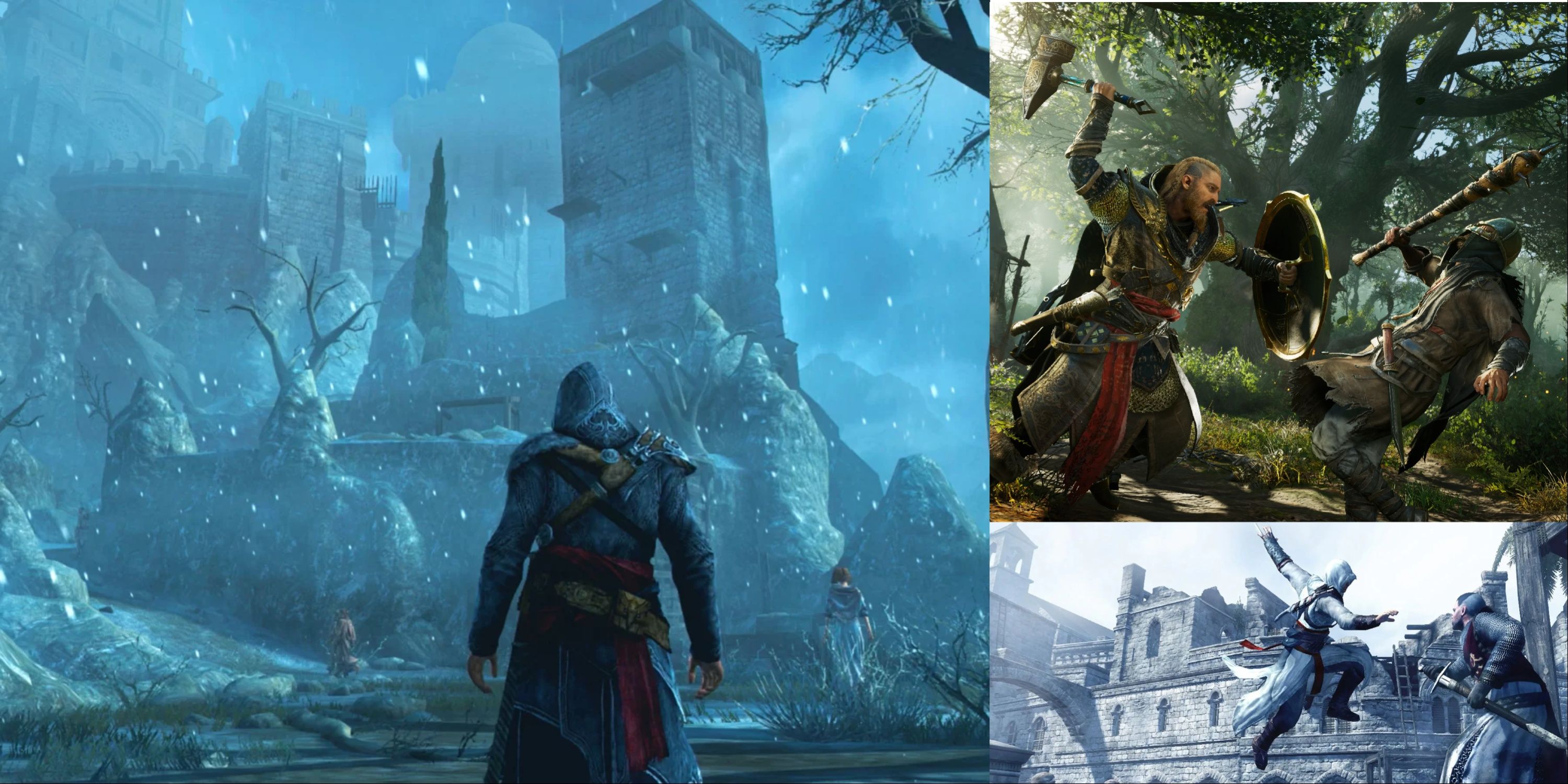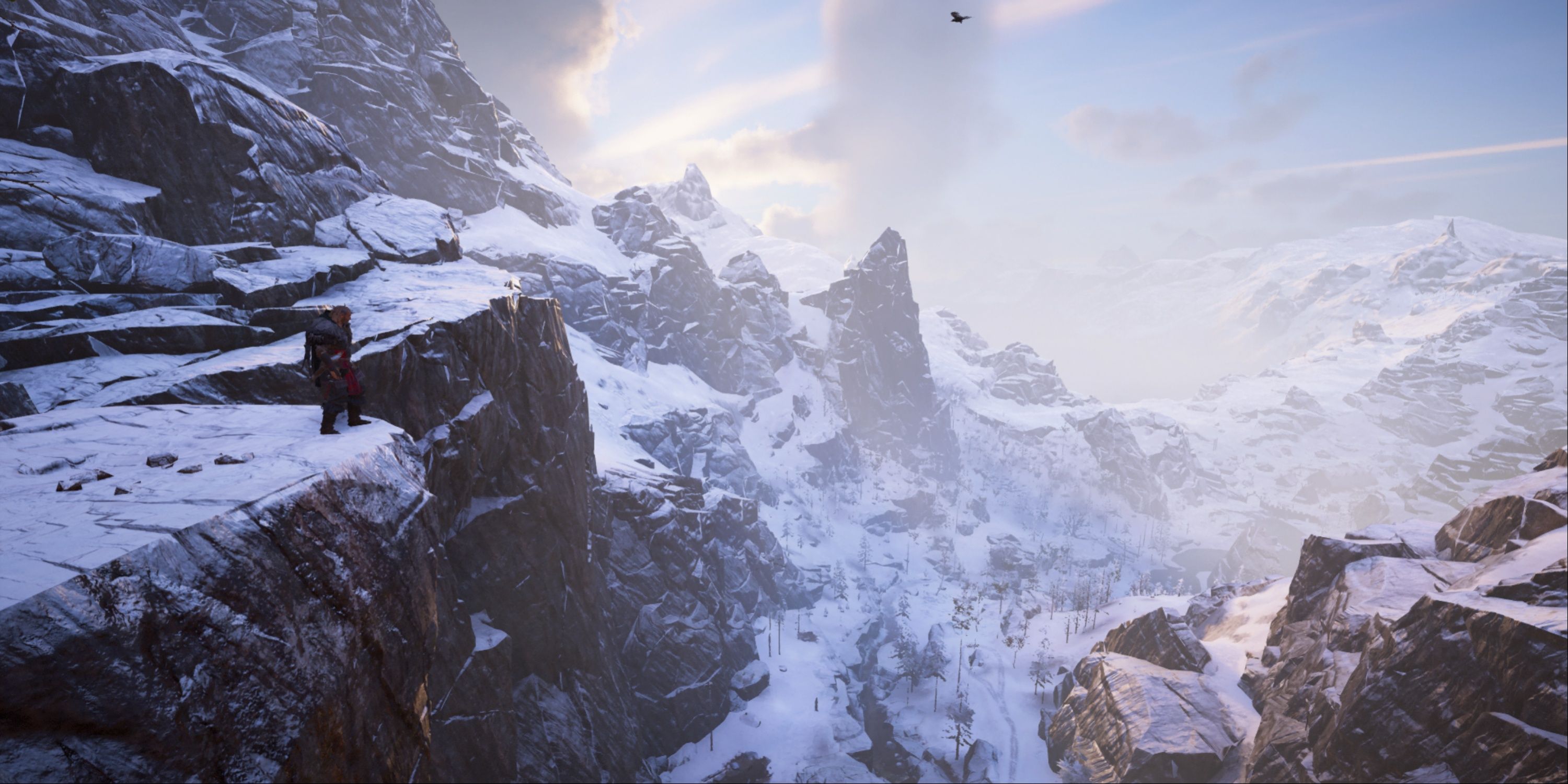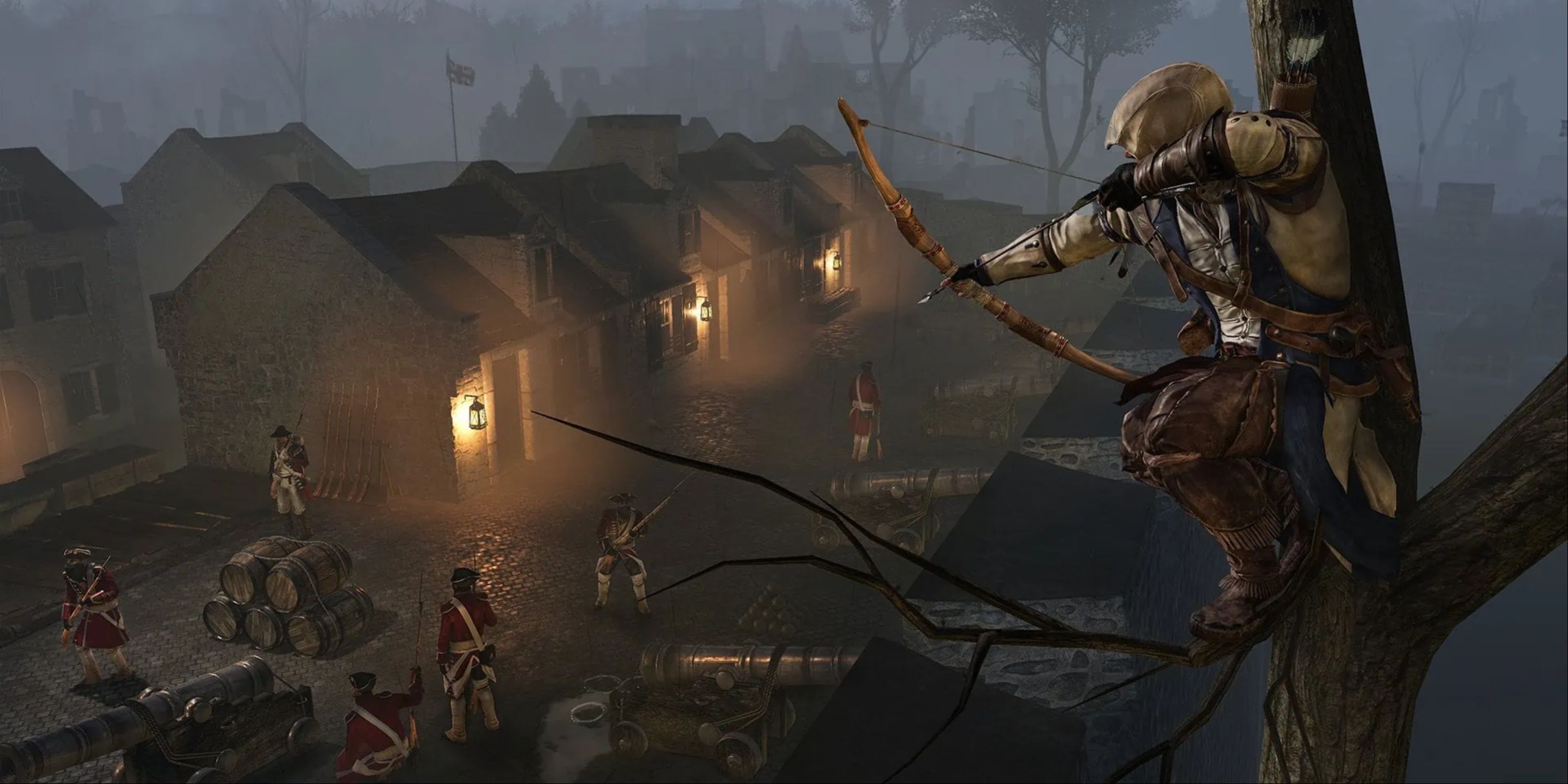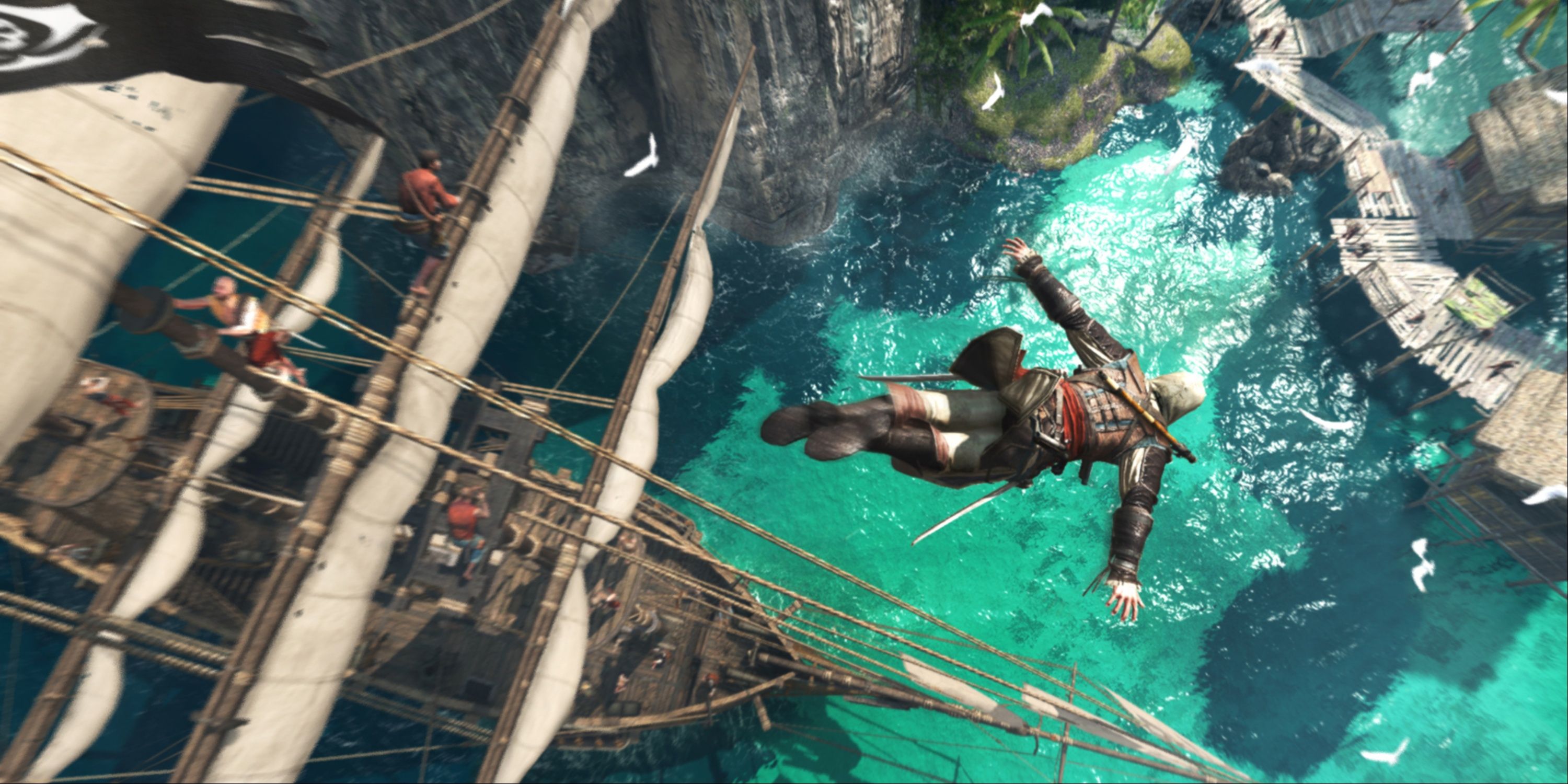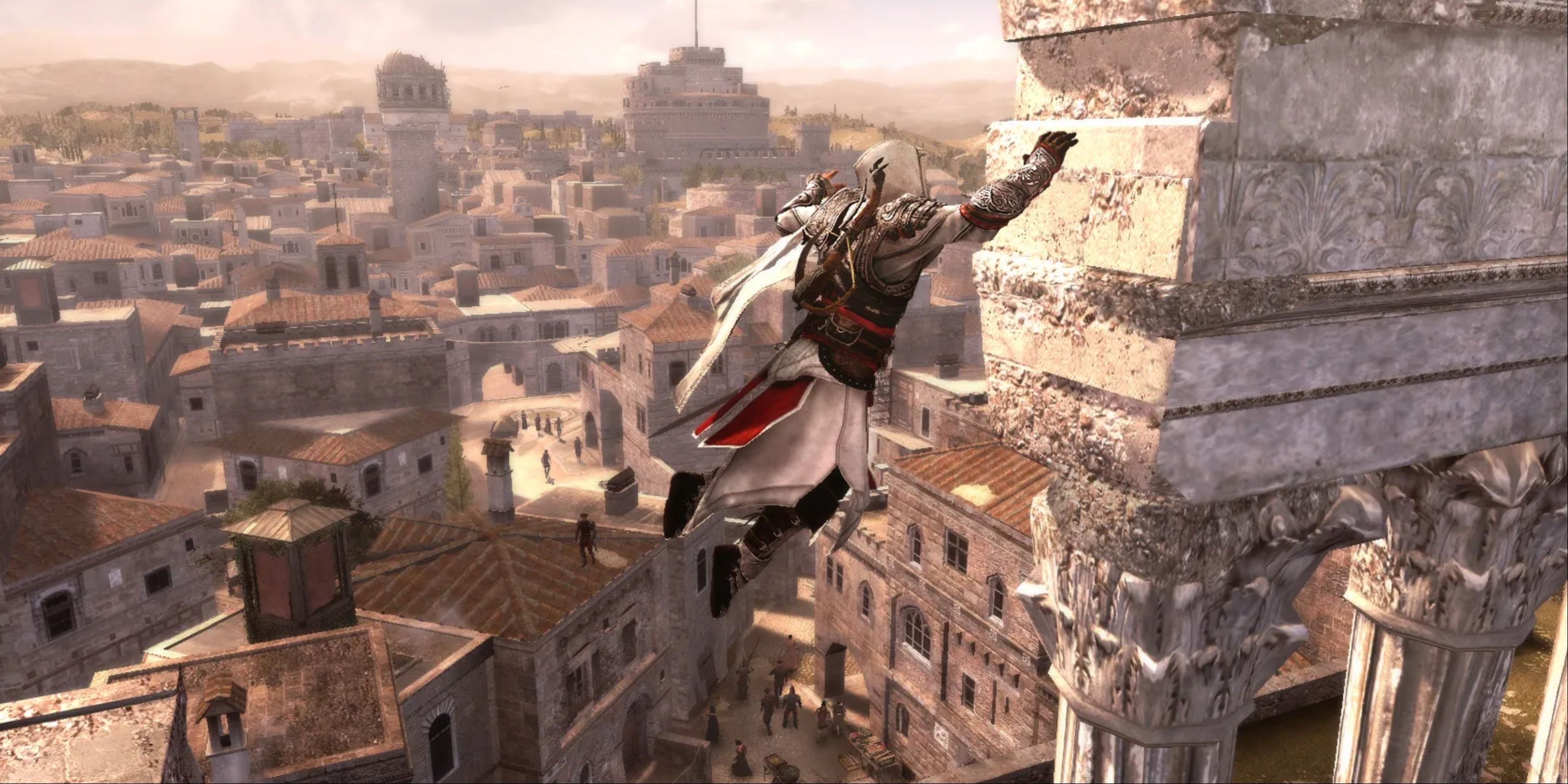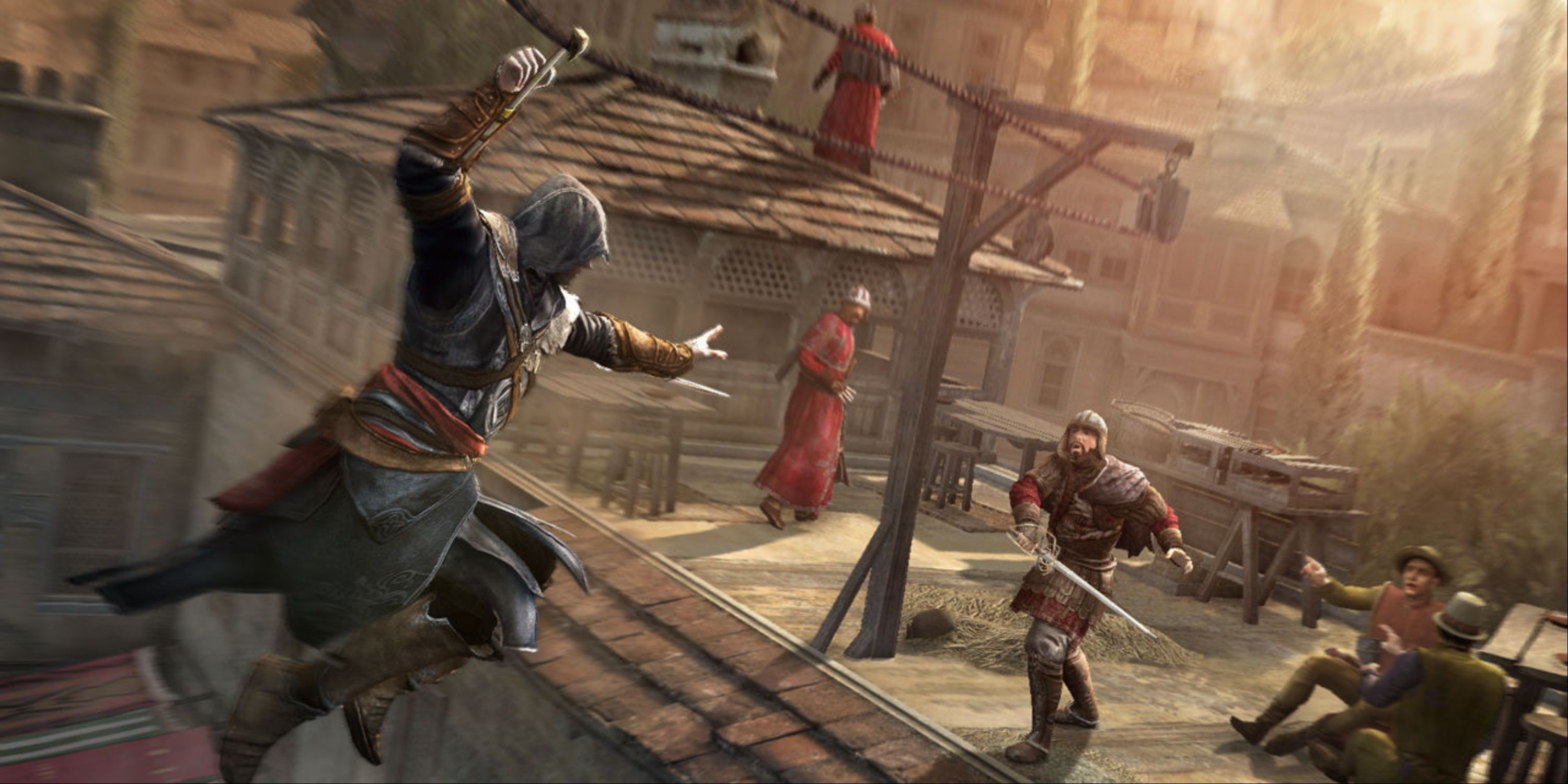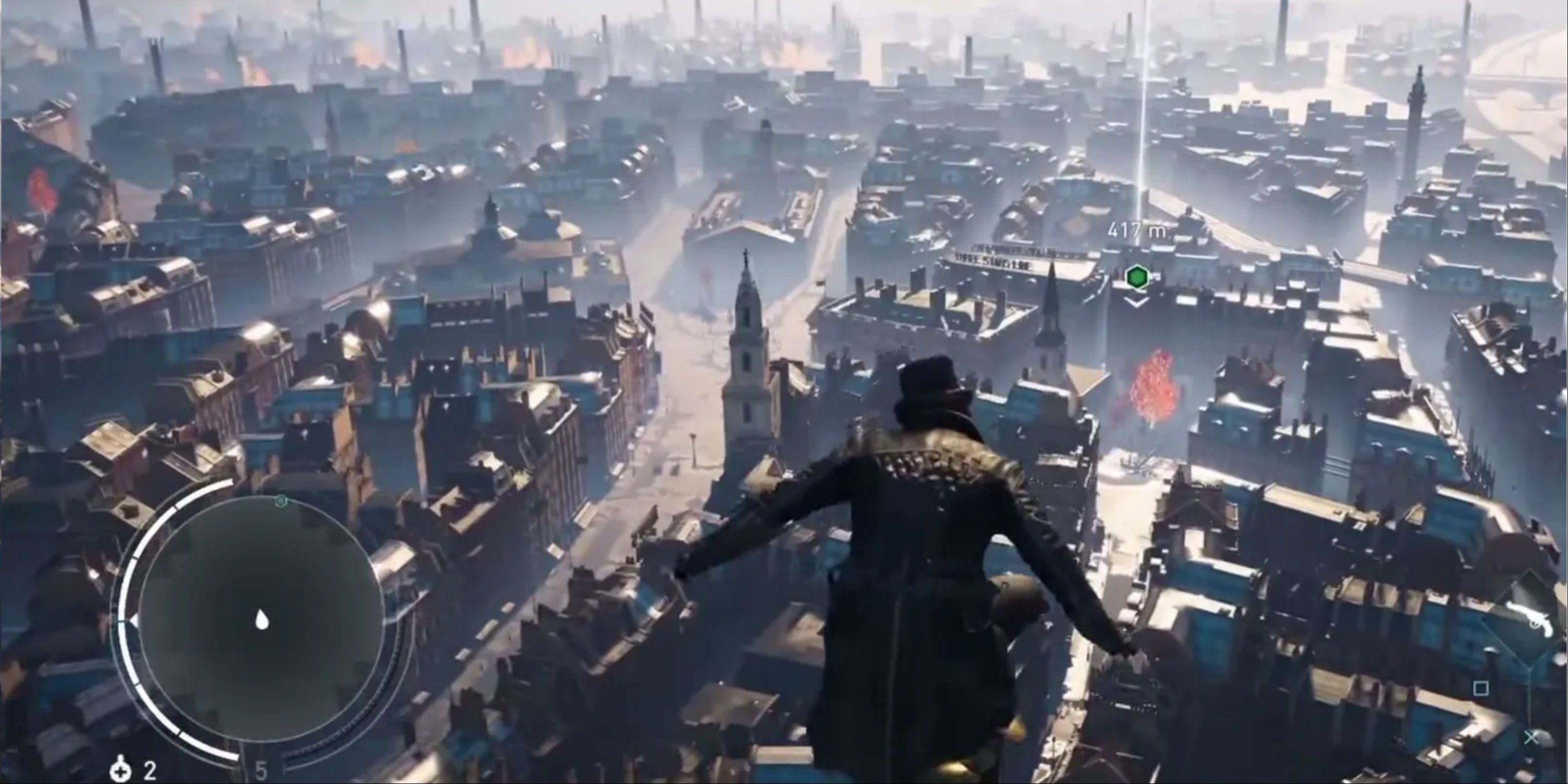It may seem like the Assassin's Creed franchise only just broke onto the scene as a launch title for the PlayStation 3, promising a wealth of exploration thanks to its innovative parkour system. That first game is in fact almost 16 years old, and there have been a grand total of thirteen sequels (including Assassin's Creed Mirage) that have followed in its wake. The franchise is now one of the most recognizable in gaming and is the flagship series of renowned developer Ubisoft.
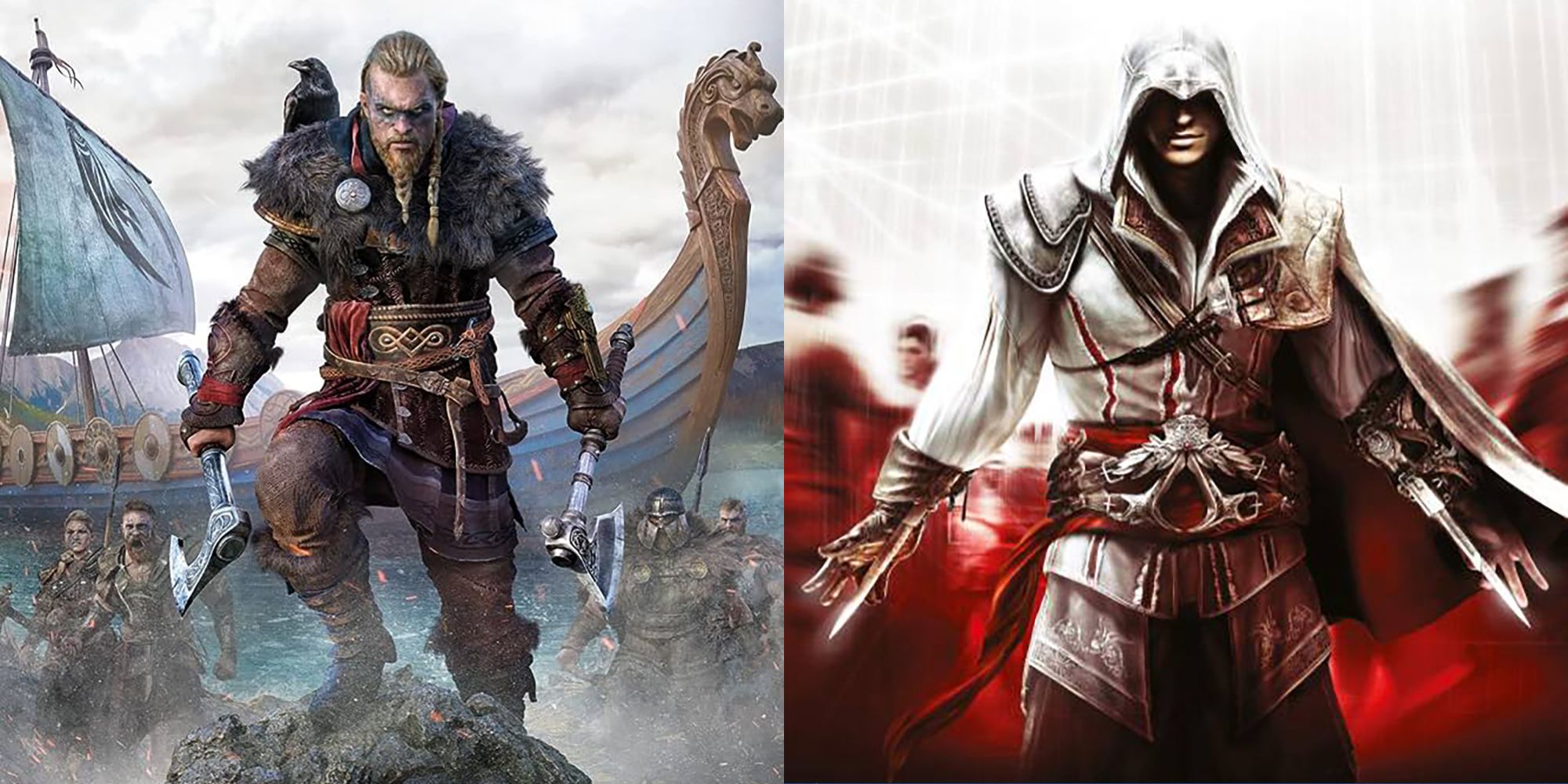
6 Hardest Assassin’s Creed Games, Ranked
The Assassin's Creed franchise is filled with challenges across the games, but some of them are still far more difficult than others.
While much has changed about the series – from its combat systems to its adherence to (or straying from) historical events and locations – the one factor that has remained consistent in every entry is the titular assassin's gift of parkour. Every member of the Creed, regardless of the time period they hail from, has traversed their native locale by climbing up buildings and leaping off into hay bales below. However, not every parkour system is created equal.
10 Assassin's Creed Valhalla
Assassin's Creed Valhalla
- Platform(s)
- Stadia , PC , PS4 , PS5 , Xbox One , Xbox Series X , Xbox Series S
- Released
- November 10, 2020
- Developer(s)
- Ubisoft
The third game in what has become known as the "RPG Trilogy," Assassin's Creed Valhalla changes little about the parkour systems found in Origins and Odyssey. The "climb anything" approach taken in these games – heavily inspired by Breath of the Wild – removes much of the thought behind the climbing systems in favor of encouraging player freedom.
The problem when it comes to Assassin's Creed Valhalla is that the vast majority of the game's exploration takes place across the open fields of 9th-century England. There is very little to actually climb in the game world besides rocky cliffs, and even when Eivor comes across a major city, buildings are small, two-to-three-story structures that don't offer the kind of verticality that the series' previous entries provided.
9 Assassin's Creed
Assassin's Creed
- Released
- November 14, 2007
- Developer(s)
- Ubisoft Montreal
- Genre(s)
- Open-World , Stealth , Action
The first game in the franchise was released to a ton of hype. Players were fascinated by the historical setting and strange sci-fi narrative. However, the actual gameplay, while still fun, was lacking in many areas, making the game as a whole feel unpolished.
Combat was extremely rudimentary, and could be mastered to the point of trivialization within a few hours. The parkour, while novel at the time, felt stunted. It was undeniably a thrill to go from running through the streets to scaling up a vertical wall to get to a rooftop, there was very little else going on to make the exploration side of things feel engaging.
8 Assassin's Creed Origins & Assassin's Creed Odyssey
Assassin's Creed Odyssey
- Released
- October 15, 2018
- Developer(s)
- Ubisoft Quebec
- Genre(s)
- Action RPG , Open-World
The other two entries in the aforementioned "RPG Trilogy" succeeded where Assassin's Creed Valhalla failed by solving its most glaring issue. While the "climb anything" system was still in place, essentially eliminating any thought behind the climbing itself, these two entries in the franchise at least gave the player interesting structures to climb.
The parkour systems in these games still left much to be desired when compared to the more engaging climbing found in previous Assassin's Creed games. There is no denying that scaling the Great Pyramids as Bayek or climbing a massive statue of Athena as Kassandra/Alexios was a thrill. The luster wore off soon enough, but even into the late game, there were still moments of awe that only Assassin's Creed could create.
7 Assassin's Creed 3 & Assassin's Creed: Liberation
Assassin's Creed 3
- Released
- October 30, 2012
- Developer(s)
- Ubisoft Montreal
- Genre(s)
- Action , Open-World
The franchise's journey to the Americas was a bit of a mixed bag. There is no question that the actual missions in these entries were lacking, particularly in Assassin's Creed 3, but the parkour mechanics were a big step forward compared to their predecessors.
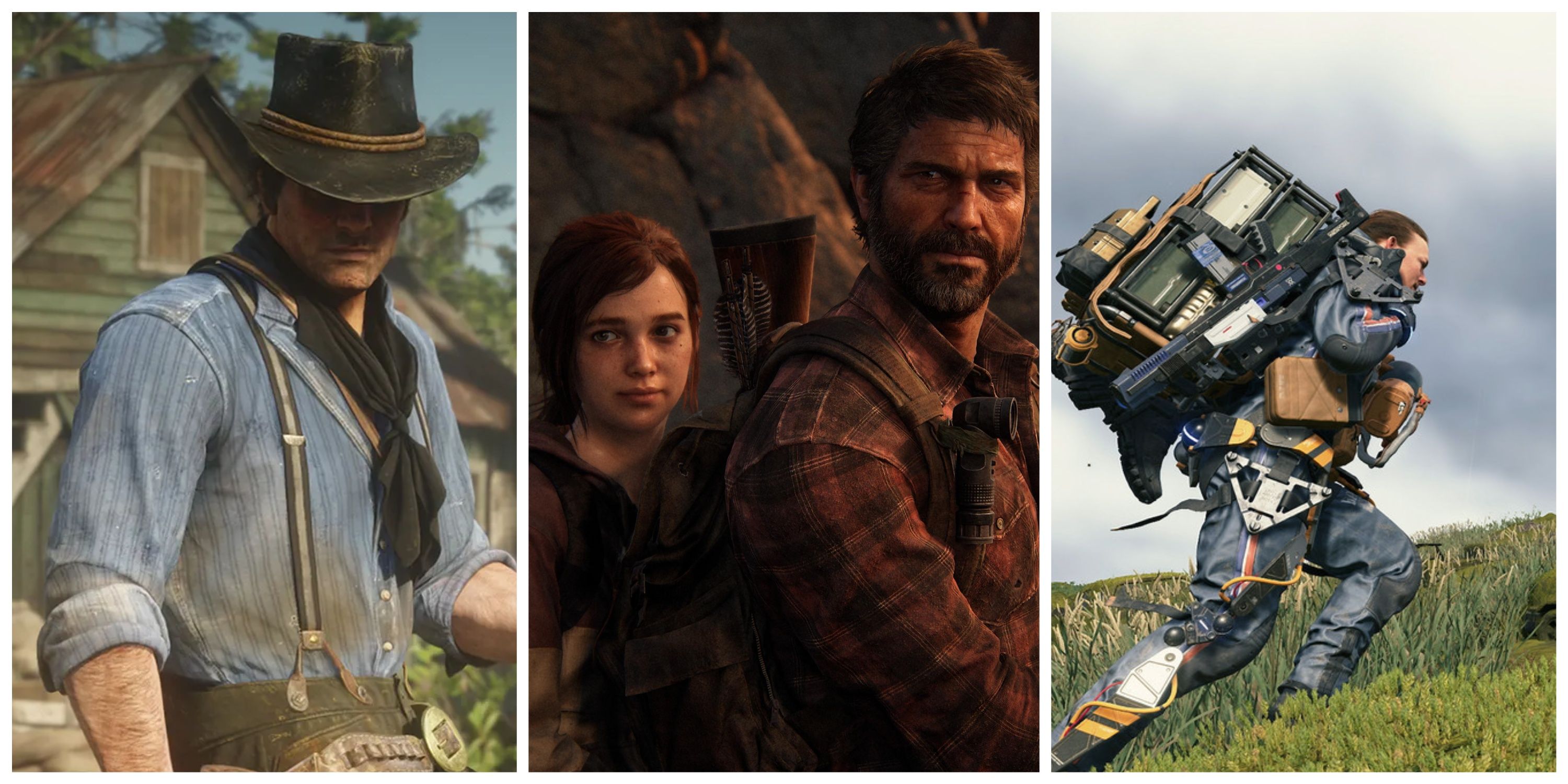
The 8 Best Games That Let You Explore North America
North America is a popular setting for many of the best games out there, and here are some of them.
The major change in Assassin's Creed 3 was Connor's ability to parkour across nature. Trees, rocks, and cliffs were suddenly wide open playgrounds, where before they had been frustrating invisible walls. Not every aspect of these games was gripping, it was exhilarating to charge through the forests of the Frontier as Connor, or through the Louisiana bayou as Aveline, and ambush a group of Redcoats from the trees above.
6 Assassin's Creed 4: Black Flag & Assassin's Creed: Rogue
Assassin's Creed 4: Black Flag
- Released
- October 29, 2013
- Developer(s)
- Ubisoft Montreal
- Genre(s)
- Action-Adventure , Open-World
While there weren't a ton of changes made to the parkour systems between Assassin's Creed 3 and Assassin's Creed 4: Black Flag, what did change was how developer Ubisoft allowed the parkour to interact with the game world. Also, they added boats.
Edward Kenway and Shay Cormac possess identical abilities to Connor and Aveline, but the protagonists from Black Flag and Rogue visit far more interesting locales in which to use them. Edward travels to uncharted tropical islands and explores them like Nathan Drake. Shay, meanwhile, ventures to the chilly Northern Hemisphere. The way the parkour systems integrated with boat combat also made for some fantastic pirate sim moments.
5 Assassin's Creed 2 & Assassin's Creed: Brotherhood
Coming just two years after the first Assassin's Creed, Assassin's Creed 2 took the parkour systems and polished them to near-perfection for the era. Ezio was far more nimble than Altair. He could swim, he could swing himself around corners on hanging pots, and he could launch himself to a rooftop via rope line.
Venice made for a far more engaging playground, with canals and cramped buildings stretching from end to end. Assassin's Creed: Brotherhood's Rome was much the same, and while the two games share identical parkour systems, few feelings can match scaling the old Roman Coliseum to get a view of the surrounding landscape.
4 Assassin's Creed: Revelations
Assassin's Creed Revelations
- Released
- November 15, 2011
- Developer(s)
- Ubisoft Montreal
- Genre(s)
- Action , Open-World
The conclusion of the "Ezio Trilogy" saw the iconic assassin, nowan old man, travel to Constantinople for his final adventure. While he lost none of his sure-footedness in the intervening years, Ezio added a few tools to his repertoire to suit the new environment, namely: the hookblade.
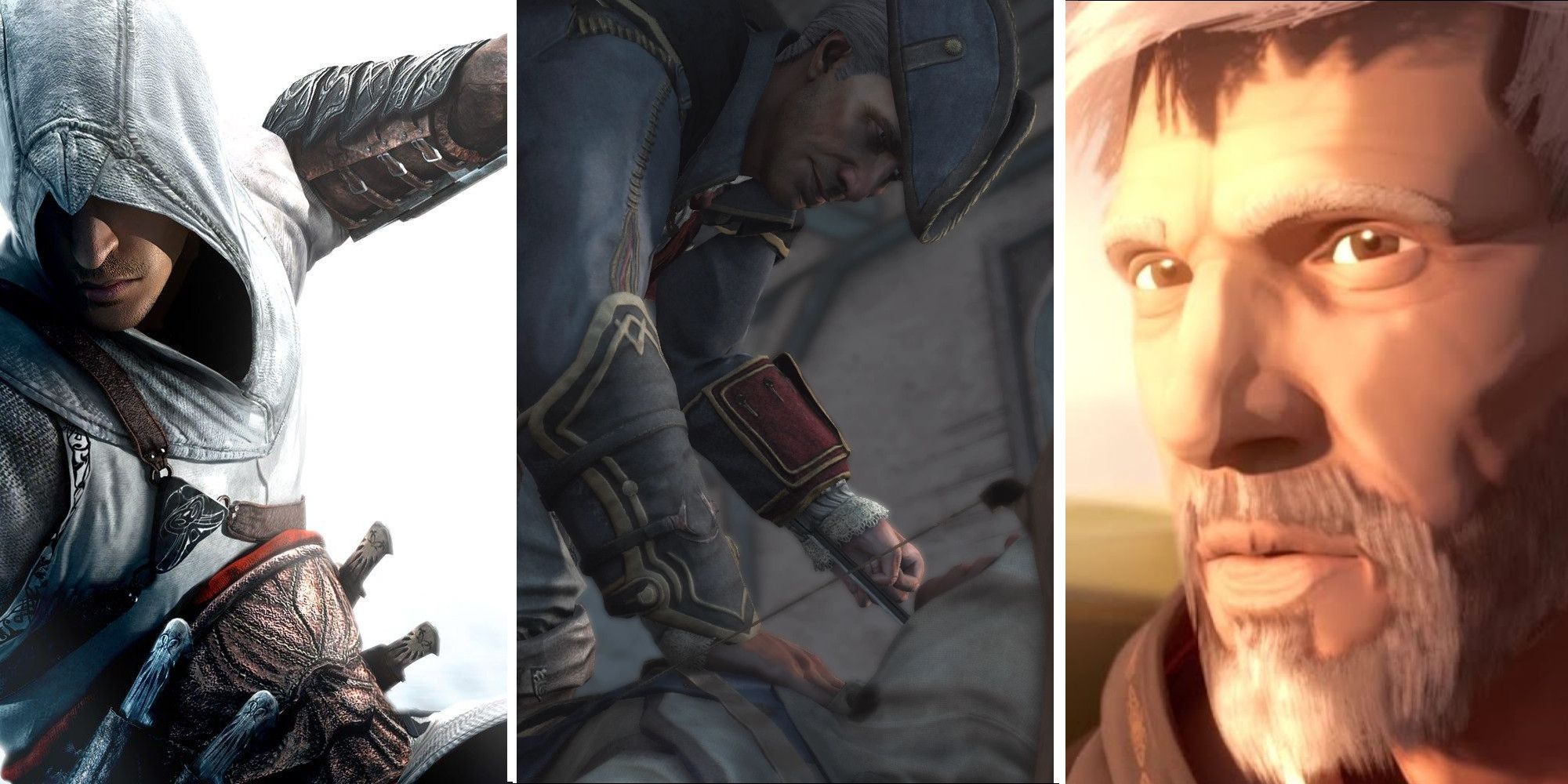
7 Saddest Scenes In Assassin's Creed
The Assassin's Creed franchise is one of the biggest titles out there, and with the franchise comes several sad moments that players face.
The hookblade allowed Ezio to make jumps across Constantinople's slightly wider streets, and latch on to ziplines to cross large distances much more quickly. While it seemed to be a minor addition on the surface, it added just enough newness to elevate Revelations' parkour systems above other entries in Ezio's trilogy.
3 Assassin's Creed: Mirage
Assassin's Creed: Mirage
- Platform(s)
- PC , PS4 , PS5 , Xbox One , Xbox Series X , Xbox Series S
- Released
- October 12, 2023
- Developer(s)
- Ubisoft Bordeaux
- Genre(s)
- Action-Adventure
Out with the new, in with the old. Ubisoft heard the criticisms of Valhalla and decided to take the Assassin's Creed franchise back to its roots. Mirage is a return to the days of Assassin's Creed Brotherhood, with just one major city to explore and a more involved approach to climbing than what was seen in the "RPG Trilogy."
Mirage also took a more stealth-focused approach to its gameplay, something fans had been clamoring for from the franchise for ages. In doing so, the parkour and climbing become more than just traversal mechanics, but integral elements towards tracking and assassinating Basim's targets. While there isn't exactly a feeling of "newness" to the game's parkour, the nostalgic return to the old days is still refreshing.
2 Assassin's Creed: Syndicate
The most modern era the franchise has ever been set in, Syndicate took the same parkour system found in Unity and added one simple tool: a grapple gun. Given that 1860s London had widened its streets to accommodate the abundance of carriages that traveled them, such a tool was necessary to give the assassins the kind of mobility they required.
The thing is, that same adjustment left something to be desired. The grapple was not so much a tool for experimentation as a specific item to be used at specific times. Very little creativity was involved in deploying it, and the fact that players had to stop moving in order to fire off a grapple meant that the parkour actually slowed down significantly with its inclusion.
1 Assassin's Creed: Unity
Set in Paris in the late 1700s, Assassin's Creed: Unity came on the scene with a revamped parkour system intended to make players feel more nimble than ever. However, the game's launch was plagued with bugs, which cast a shadow over any innovation.
That's unfortunate, because Unity has, by far, the best parkour system in the franchise. Arno is far more fleet-footed than any of the other assassins, with a dedicated button to parkour down buildings as well as up them, and a huge variety of animations for various traversal situations found throughout the bustling city of Paris. It's a parkour system that players are still discovering new details about to this day, and one that many fans are begging Ubisoft to return to.

